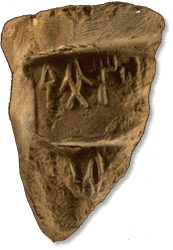Asko Parpola
 Asko Parpola needs no introduction to those interested in the problems of the Indus script. A specialist in Vedic philology, he turned his attention at an early stage in his career to the decipherment of the Indus script and has, along with his Finnish colleagues, made immensely valuable contributions to his chosen field over the last three decades. Although he is associated with the Dravidianist school of decipherment, his contributions to the documentation and theoretical studies of the Indus script transcend linguistic boundaries.
Asko Parpola needs no introduction to those interested in the problems of the Indus script. A specialist in Vedic philology, he turned his attention at an early stage in his career to the decipherment of the Indus script and has, along with his Finnish colleagues, made immensely valuable contributions to his chosen field over the last three decades. Although he is associated with the Dravidianist school of decipherment, his contributions to the documentation and theoretical studies of the Indus script transcend linguistic boundaries.
Of the earlier books co-authored by Parpola, special mention must be made here of the Corpus of Texts in the Indus Script (1979), A Concordance to the Texts in the lndus Script (1982), and the magnificently produced photo albums, Corpus of Indus Seals and Inscriptions, two volumes of which have so far been published (1987, 1991) with assistance from UNESCO and co-operation of the Archaeological Departments of India and Pakistan. These books have already established themselves as the standard reference works and indispensable tools for further research on the Indus script.
Terra-cotta sealing with two impressions from Harappa
Parpola's latest book covers a much wider area than what its title indicates. The volume commences with a brief survey of the Indus Civilization in its historical context and an illuminating account of the writing systems of the ancient world and the methods devised to decipher them. Then follows a very detailed study of the theoretical aspects of the Indus script including a structural analysis of the texts, a typological analysis of their linguistic features and the methodology of decipherment. While arguing that the Indus Civilization is pre-Aryan and non-Aryan, Parpola presents an altogether new and fascinating theory about the Aryan immigration into the Indian subcontinent. Next he sets out in detail the evidence for believing that the Harappans were Dravidian speakers. In the last part of the work Parpola presents his readings and interpretations of selected Indus signs together with a detailed description of the astral religion of the Harappan culture revealed, according to him, by the inscriptions.
Rise and Fall of the Indus Civilization
Recent archaeological evidence especially from Mehrgarh has established that the Indus Civilization was essentially an indigenous development growing out of local cultures in an unbroken sequence from the Neolithic at the end of the eighth millennium BCE, through the Chalcolithic (about 5000-3600 BCE) and Early Harappan (about 3600-2600 BCE) to the commencement of the Mature Harappan period in about 2550 BCE.
The Indus civilization began with some major developments like the introduction of writing and a surprisingly uniform culture over the whole of the greater Indus valley. According to Parpola this development was due to increased maritime trade and closer cultural contacts with Mesopotamia and the Gulf region. There is now general agreement that Meluhha mentioned in the cuneiform inscriptions refers to the land of the Indus. Parpola lays stress on the importance of Harappan contacts with West Asia, which provide relevant parallels and potential sources of information on the Harappan culture.
The Indus Civilization flourished between about 2600 and 1800 BCE when it collapsed into regional cultures at the Late Harappan stage. According to Parpola the collapse was due to a combination of several factors like over-exploitation of the environment, drastic changes in the river-courses, series of floods, water-logging and increased salinity of the irrigated lands. Finally the weakened cities would have become easy victims of the raiders from Central Asia, whose arrival heralded a major cultural discontinuity in South Asia.
